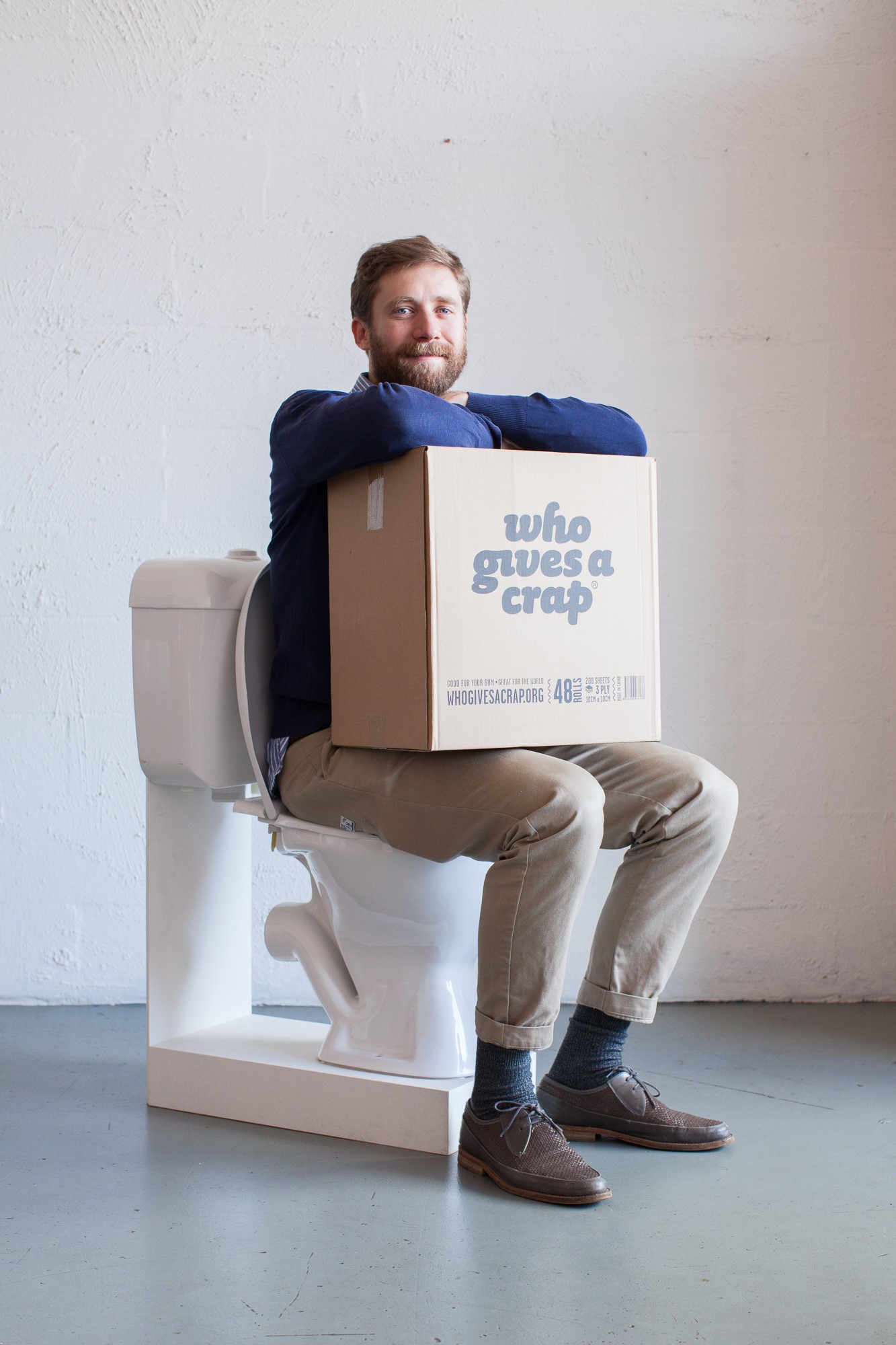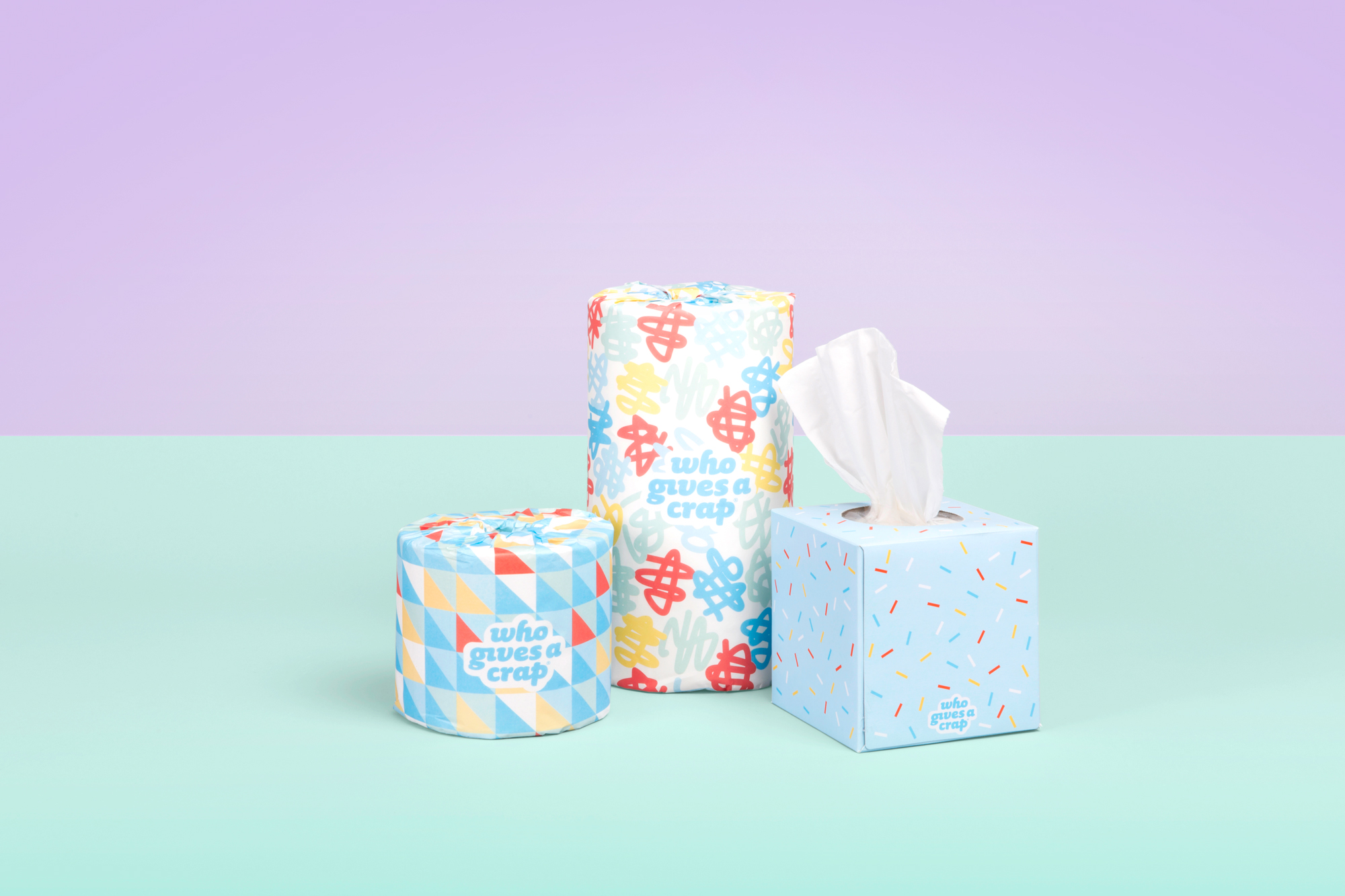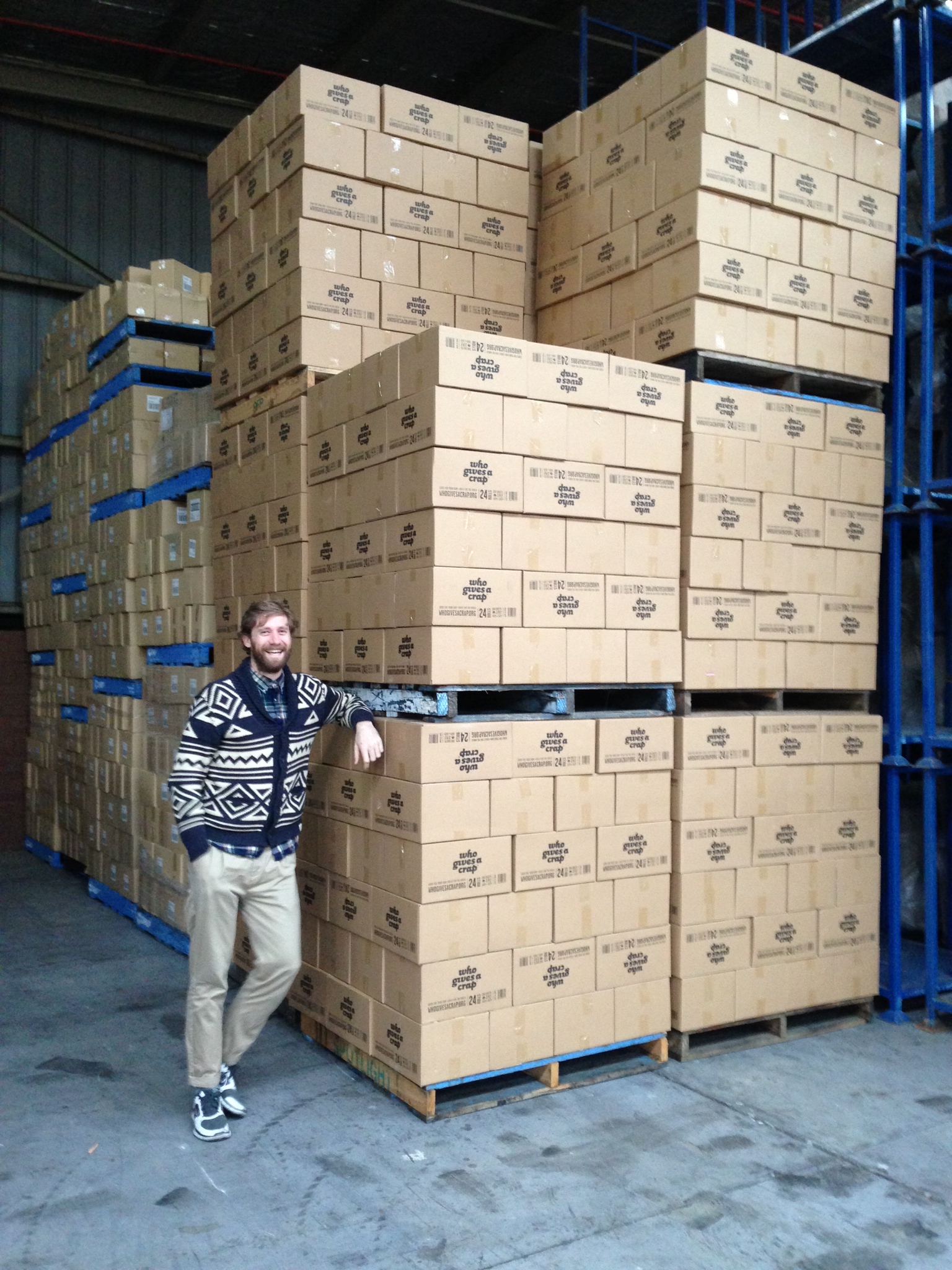Who Gives A Crap’s way of addressing sanitation and water access is flush with promise

On 10 July 2012, Simon Griffiths sat on a toilet, pants round ankles, to raise money for his new startup. In a web stream from a logistics warehouse that went across the globe, Griffiths delivered a series of humorous one-liners – “sitting down for what he believes in”, “help Simon get off the toilet” – while outlining the concept of his new business: a toilet paper producer that directs part of its profits to aid projects.
In the stunt’s fiftieth hour, and after obtaining $1 million dollars worth of global media without any marketing budget, Griffiths met his crowdfunding target of $50,000, which would allow him to do the first bulk production run of the toilet paper, aptly named Who Gives A Crap. He then went to bed.

Who Gives A Crap is part of a new movement of social enterprises that are designed to confront a social problem while also being financially sustainable. Here, the problem Griffiths addresses is sanitation in the developing world. Fifty percent of Who Gives A Crap’s profits go to WaterAid, which delivers sanitation projects in two of Australia’s closest neighbours, East Timor and Papua New Guinea. Every roll sold provides access to one person to a toilet for a week. Within two years of business, it provided toilet access to almost 70,000 people.
“Sanitation is not a sexy topic,” says Griffiths. “One third of the world’s population does not have access to adequate sanitation. Partly, the reason [for that number] is that people have an aversion to talking about it. Clean water is way easier to sell to a donor – it’s easier to ‘demonstrate’ having an impact with a picture of someone turning on a tap rather than one of someone on the toilet.”
Who Gives A Crap works around this lack of glamour by directly linking its product to the issue in order to generate a conversation around it.
The business disrupts the traditional model for delivery of foreign aid by working around two roadblocks: a limited and competitive funding pool in the non-profit sector and the difficulty of changing people’s behaviour. It does this by aiming to change people’s buying habits rather than their behaviour. It then layers literal toilet humour on top: lines like “good for your bum, great for the world”. Who Gives A Crap conceals the donation within a product that people use daily so that people give more. Griffiths remarks, “You can’t motivate a sale with guilt, but humour goes a long way.”

The initial business development was aided by a stint by Griffiths at the Unreasonable Institute in the US (which offers support to entrepreneurs), along with a grant from The Australian Centre for Social Innovation, but since then Who Gives A Crap’s growth has been driven entirely by its customer base. The decision to raise startup capital through crowdfunding was very deliberate: it allowed the business to maintain ownership over its ideas while reaching micro-investors, who would become the customer base and brand ambassadors.
There were some early teething problems for the business. When Griffiths wanted to test out if a toilet paper called Who Gives A Crap would actually sell, he set up a small e-commerce store that pitched his product against established brands. The first customer was from Albany (418 kilometres south-east of Perth). Griffiths recalls, “We put 48 toilet rolls in the box for a retail price of $30. It cost us $54 to send.”
This initial logistical hurdle was the catalyst for Who Gives A Crap improving its distribution in the west. A Swanbourne garage became the Perth logistics centre for the expanding business and was run by Griffiths’ father, who did the work outside his day job as a management consultant.

Griffiths reflects, “When we first got started we would service all of Western Australia by sending pallets on the train. My father would store the pallet in the garage and use the family car to deliver boxes to people who were close by. [When the recipients were] further away, he would send [the rolls] via the post. He would then keep the receipts, and I would reimburse him.”
When sales started to boom, rather than stretch the relationship with his father, Griffiths started using a logistics centre south of Perth, towards Mandurah. It wasn’t easy to find. Griffiths explains that logistics and freight in Western Australia are geared towards mining, and do not necessarily accommodate small-scale businesses, including pick-and-pack warehouses.
Who Gives A Crap highlights how infrastructure can be funded across geographies and time zones: a toilet roll sale in Albany can help build a toilet in Dili. It also demonstrates alternative models for raising startup capital; in this case, through crowdfunding. While Griffiths had success with crowdfunding, this is not the case for all businesses. Only slightly more than 10 percent of crowdfunding campaigns are successful.

In the design profession, most successful crowdfunded projects originate from global cities that attract media attention (New York, Paris or London), are gimmicky in order to go viral, have project budgets of around $12,000, and are supported by people aged 25 to 35 years old. While it’s mostly community parks and gardens that get funded, there have been a few rare instances where civic projects – a public swimming pool in New York City, a skyscraper in Bogota and a pedestrian bridge in Rotterdam – have been the beneficiaries of public largesse.
It’s much easier to raise crowdfunded capital for products than for buildings or infrastructure. Who Gives A Crap neatly circumvents this problem by using a product to contribute to civic infrastructure in another location. “Doing good” has seen the company grow rapidly in four short years. This begs the question: what other infrastructure can be built with new models of product and service delivery?
This is the first in a series of articles that Assemble Papers will be republishing from Future West (Australian Urbanism), a new print publication produced by the University of Western Australia’s Faculty of Architecture, Landscape and Visual Arts. Future West looks towards the future of urbanism, taking Perth and Western Australia as its reference point. Huge thanks to Future West editor, Sibling co-director and friend of AP Timothy Moore for sharing his words with us.